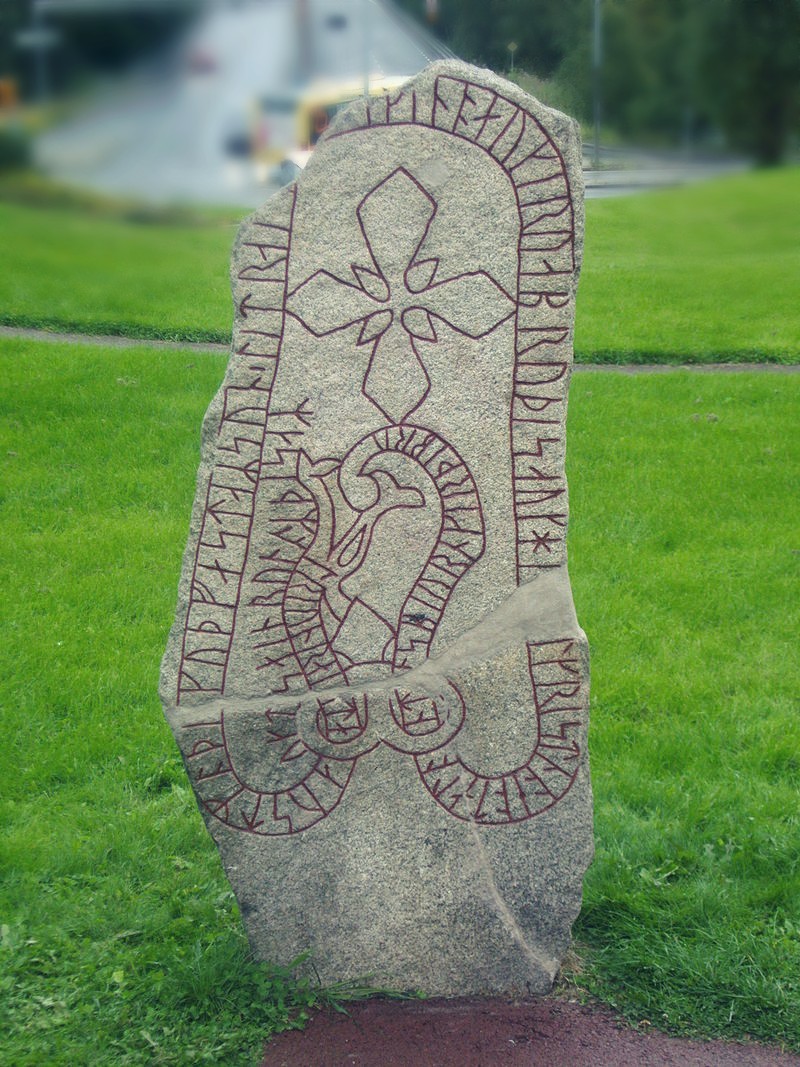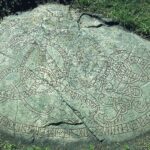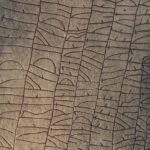Sweden is the country with the absolute highest density of rune stones. Those familiar with European geography know that Sweden is a very long land, measuring a whopping 1 572 km north-south. However, even though Sweden currently holds as many as 2281 known runestones, none is further north than Frösöstenen in Östersund, Jämtland county, approximately in the middle of Sweden. Besides being the northernmost stone, it also tells of special events and is believed to be magical.
The Frösö stone was erected around 1050 A.D. on the island Frösön (island of Freyr, located in lake Storsjön). As a sharp-eyed reader, you might remember this name: we have written about Frösön before, about the ancient sacrificial tree found under the medieval church’s altar when the floor was renovated. Yes, we are back on this island.
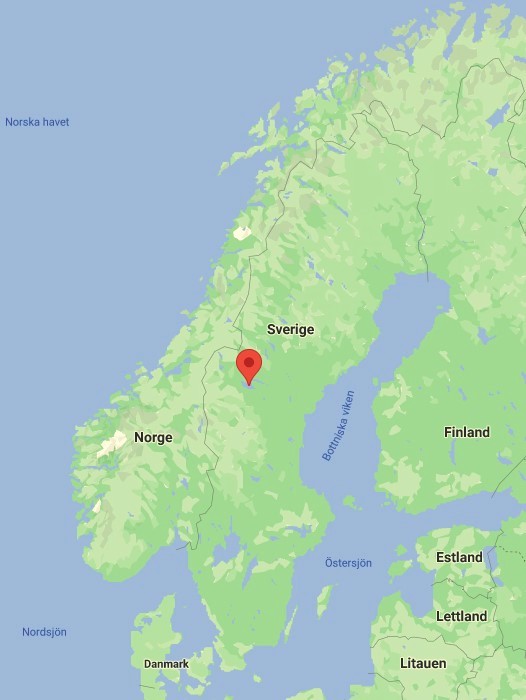
The Frösö stone, depicting a rune dragon, tells the story of a man who seems to have been very diligent; he personally ordered the erection of the runestone, as well as a bridge, and also Christianized the whole of Jämtland.
The inscription reads as follows (translated by Lovisa Sénby posse):
“Östman, Gudfast’s son, let this rune to be erected and to make this bridge, and he also Christianized Jämtland. Åsbjörn made the bridge. Tryn and Sten carved these runes.”
This is the first runestone talking about the Christianization of a whole county (Jämtland) and is also the first literary source that mentions Jämtland, meaning the land of the Jämtar. To this day, the people of Jämtland are very close to their parish and very proud, even having a dialect so profound it can almost be its own language, a national song, a flag, and president (the last one just for the fun of it).
As this stone was erected at the same time Jämtland was Christianized and it is referring to this historical event, rather than memorising one individual’s life, it deviates from the usual form of Swedish runestones from this time period. The bridge that it mentions, however, has no traces left today.
But this is not all: the stone is also believed to be magical. You see, it is believed that a large sea beast dwells in Storsjön (perhaps a cousin to the famous Nessie). The Frösö stone, with a magical spell, is the only thing keeping the beast from going berserk.

The first time the story about the beast was mentioned in writing was in a text by the vicar Mogens Pedersen in 1635. The story goes that a long time ago, two trolls, Jata and Kata, were brewing something in their cauldron on the beach at Storsjön. They did not know what the result of their brewing would turn out to be but continued their work for weeks. While they were wondering what their toil would eventually lead to, one cold evening, terrible sounds started to arise from the cauldron, ending with a loud bang. Rising from the smoke in the cauldron was a strange animal with a pitch-black body like a snake and a face like a cat. It jumped out of the cauldron and disappeared from Jata and Kata’s sight, out into the lake.
In the lake, the beast was thriving, growing larger with each day and increasingly feared by the people of Jämtland. One day, its grotesque body had grown so big it could reach all around Frösön and bite its own tail. Something had to be done as the terror grew stronger amongst the people, and a man named Ketil Runske stepped up. He bound the enormous beast with a powerful magical spell which was carved into stone and placed on Frösön. The beast is depicted on the stone, biting its own tail. It is bound in the lake until the day someone can read and understand the runes again.
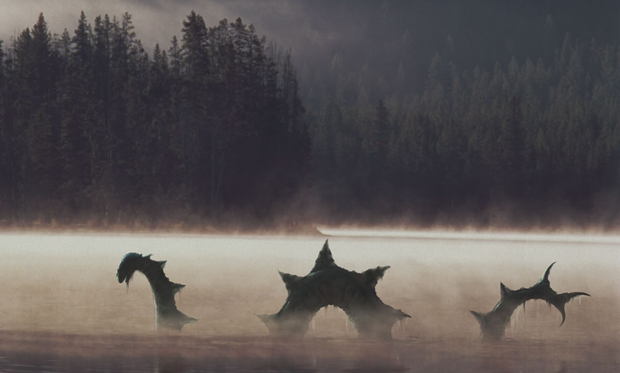
If you ever talk to a Jämte (a person from Jämtland), they will talk with love in their voice about their county, framed by snowy mountains and far-reaching forests. They will probably say “you should come and visit”, but proceed with caution: remember, the runic inscription has been read again, and we cannot be sure what lurks underneath the calm surface. We know there have been reports of something moving in the water so be careful if you go for a swim in Storsjön.
Cover Photo: Frösöstenen. Riksantikvarieämbetet.
Grapic design: Lovisa Sénby Posse 2021. Copyright 2021 Scandinavian Archaeology.
Text: Lovisa Sénby Posse 2021. Copyright 2021 Scandinavian Archaeology .
About the author
Iron age Scandinavian archaeologist with a bachelor in Liberal arts with major in Archaeology and a bachelor in Art history with major in Nordic art, both from Uppsala University, Sweden. Exchange studies at Trinity College, Dublin, Ireland, and University of Pretoria, Pretoria, South Africa.
Master of Arts (two years) in Archaeology with specialization in burials, ship burials, and artefact management and interpretation, also from Uppsala university, Sweden.
In my master thesis I created an analyzing method to handle large quantities of artefacts, a method descended in Art History. I also created a method with elements of theory to perform a spatial analysis on graves. This also derived from Art History. The methods were applied to ship burials at Valsgärde, Upland, Sweden.
As Editor-in-chief, I am responsible for the publication and over all work with Scandinavian Archaeology, a job I deeply enjoy. I also founded the magazine in late September 2020.
